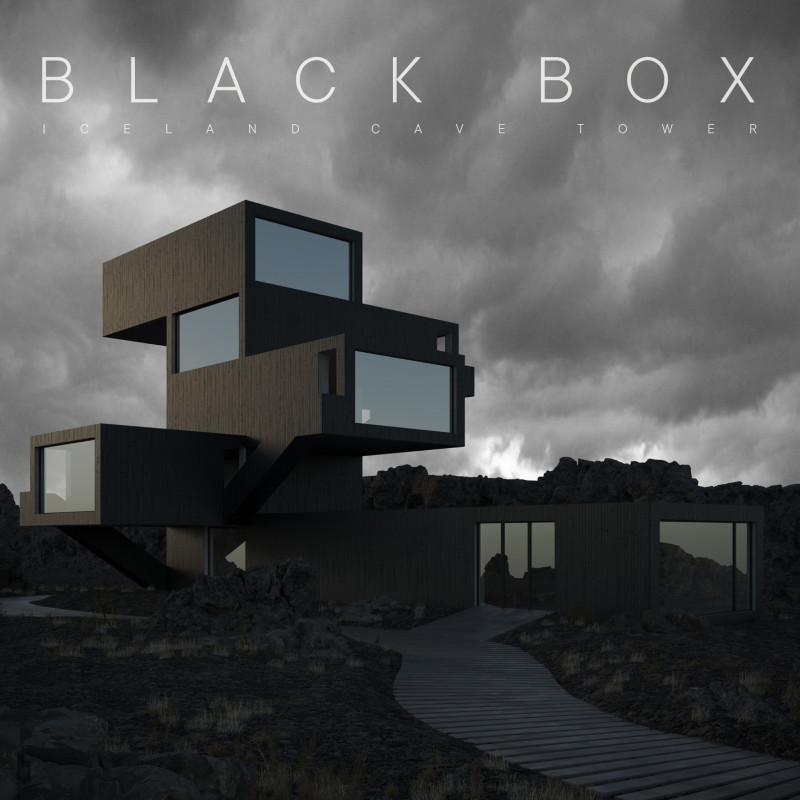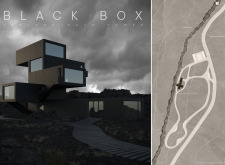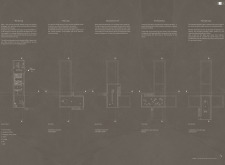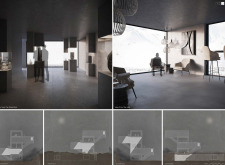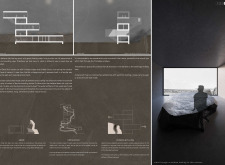5 key facts about this project
The architectural design emphasizes a cube-based form with multiple levels, each oriented to capture different perspectives of the landscape. The façade features charred wood, utilizing the Shou Sugi Ban technique, enhancing longevity and resistance to harsh weather conditions while establishing a visual connection with the local environment. Internally, the spaces are dominated by concrete and expansive, frameless glass windows that facilitate natural light and offer uninterrupted views.
Unique Design Features and Materiality
The Black Box's approach to materiality sets it apart from conventional architectural design. The use of charred wood not only provides aesthetic value but contributes to durability, making the building resilient against the elements. The design incorporates aspects of sustainability by selecting local materials and striking a balance between natural surroundings and human intervention.
The interior configuration maximizes flexibility, allowing for various exhibition setups that can accommodate a range of cultural activities. Key design elements include the viewing platforms situated at different heights, enabling visitors to experience the landscape from multiple vantage points. The integration of the Rock Box as a sculptural feature reinforces the connection to the geological context, creating an immersive experience that communicates the significance of the site’s natural history.
Functional Aspects and Circulation
The project boasts a well-considered circulation system that promotes fluid movement throughout the building. Curved pathways lead visitors through exhibition rooms, facilitating an intuitive flow from one space to the next. Additionally, an outdoor staircase provides alternate access, allowing users to engage directly with the surroundings as they ascend.
The strategic layout enhances the building's function as both an observatory for tourists and a communal space for cultural events. The design accomplishes a dual purpose by facilitating education and appreciation of the unique geological characteristics of Iceland while creating an architectural landmark that resonates with its setting.
For those interested in a deeper understanding of the Black Box project, further exploration of architectural plans, architectural sections, and architectural designs is encouraged. These elements will provide additional insights into the project's unique concepts and innovative design approaches.


